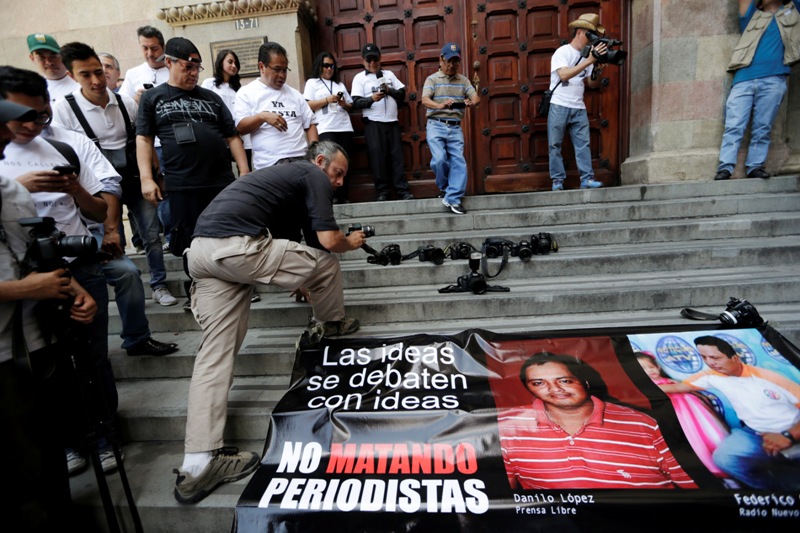The year 2015 is on course to be the deadliest year for the media on record, according to the International Press Institute’s (IPI) Death Watch, which has systematically kept track of journalists’ killings around the world since 1997.
Sixty-one journalists have been killed for reasons related to their work or have died in accidents while on assignment so far this year. This figure does not include approximately 54 journalists whose deaths are currently under review by IPI for inclusion in the Death Watch.
The annual number of journalist killings had gradually declined since 2012, when the to-date highest toll of 133 deaths was recorded. However, with a potential total of 115 deaths already by mid-September, 2015 threatens to end as the most dangerous year yet for journalists around the world.
“IPI’s figures reveal the alarming extent to which journalists around the world are increasingly targeted for their reporting,” IPI Executive Director Barbara Trionfi said. “The killing of a journalist is the most heinous way not only of silencing an individual report or the media of a particular country, but also of denying the public news and information to which it has a right.”
She added: “The large number of cases under review reflects the difficulty of obtaining reliable information about the motives behind the killings of journalists, in large part due to the failure of states to conduct proper and open investigations.The inability, or in some caes unwillingness, to bring perpetrators to justice is what continues to fuel these terrible crimes.”
Fifteen of the confirmed 61 deaths on IPI’s Death Watch were the results of accidents that occurred while on assignment. Syrian journalist Thaer al-Ajlani, for instance, died after being wounded by shrapnel from a mortar shell while covering clashes between rebel groups and pro-government forces in Jobar. Other deaths on assignment include Sri Lankan television journalist Priyantha Ratnayake, who was crushed by a wild elephant he had been filming, and Zambian journalist Priscilla Pakati, who died in a traffic collision while on her way to cover a local healthcare initiative.
The overwhelming majority of deaths this year, however, have been intentional killings of journalists who were targeted because of their profession or the content of their reporting. Around the world, 46 journalists have been assassinated or murdered since January, several of whom had previously received death threats or had been kidnapped.
The murder of Brazilian radio host Gleydson Carvalho while live on air in August and the harrowing video that accompanied the killing of Colombian radio journalist Flor Alba Núñez Vargas as she entered her studio last week, among others, demonstrate the brazen nature of the attackers and underscore the risks that journalists take to pursue their stories.
Of the 61 deaths recorded by Death Watch in 2015, almost one-third were linked to the Islamic State group, either through direct executions or due to injuries sustained while reporting in the conflict areas. Throughout 2014, horribly graphic videos of beheadings carried out by the group swept the Internet, in which several of the victims were journalists. Reporting on the actions of the Islamic State group is exceedingly dangerous and so far this year 19 journalists who attempted to shed light on the activities of the group were killed while doing so.
All of the 13 Iraqi journalists killed this year were either executed by Islamic State group militants or died while reporting on IS-related conflicts. In May, Islamic State militants executed television journalist Firas Al-Bahri, who had been held captive for three weeks after refusing to join the group. On September 8, journalist Ikhlas Ghanim was shot dead in front of a crowd by Islamic State militants on charges of supporting ‘propaganda’ against the group. However, local sources said Ghanim was executed because she reported on atrocities committed by the Islamic State group.



